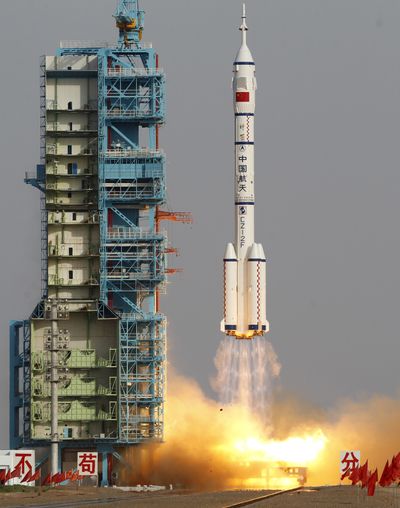Female astronaut joins Chinese trip to module

JIUQUAN, China – China launched its most ambitious space mission yet on Saturday, carrying its first female astronaut and two male colleagues in an attempt to dock with an orbiting module and work on board for more than a week.
The Shenzhou 9 capsule lifted off as scheduled at 6:37 p.m. from the Jiuquan Satellite Launch Center on the edge of the Gobi Desert. All systems functioned normally and, just over 10 minutes later, it opened its solar panels and entered orbit.
The launch was declared a success by space program chief Chang Wanquan, a People’s Liberation Army general who sits on the ruling Communist Party’s powerful central military commission – underscoring the program’s close military ties.
Female astronaut Liu Yang, 33, and two male crew members – mission commander and veteran astronaut Jing Haipeng, 45, and newcomer Liu Wang, 43 – are to dock the spacecraft with a prototype space lab launched last year in a key step toward building a permanent space station. All three are experienced pilots and officers in the Chinese air force.
Two of the astronauts will live and work inside the module to test its life-support systems while the third will remain in the capsule to deal with any unexpected emergencies.
China is hoping to join the United States and Russia as the only countries to send independently maintained space stations into orbit.
Another manned mission to the module is planned later this year, while possible future missions could include sending a man to the moon.
The space program is a source of enormous national pride for China, reflecting its rapid economic and technological progress and ambition to rank among the world’s leading nations. The selection of the first female astronaut is giving the program an additional publicity boost.
The astronauts are expected to reach the module, called Tiangong 1, on Monday. Now orbiting at 213 miles above Earth, the module is only a prototype, and plans call for it to be replaced by a larger permanent space station due for completion around 2020.
China first launched a man into space in 2003, followed by a two-man mission in 2005 and a three-man trip in 2008 that featured the country’s first spacewalk.